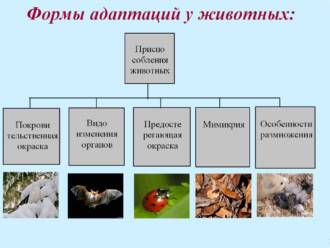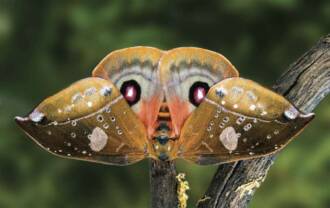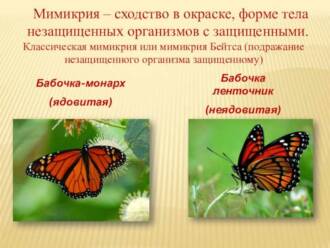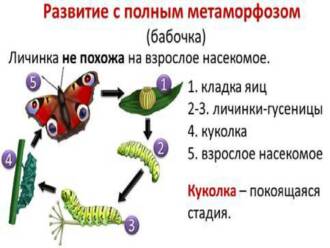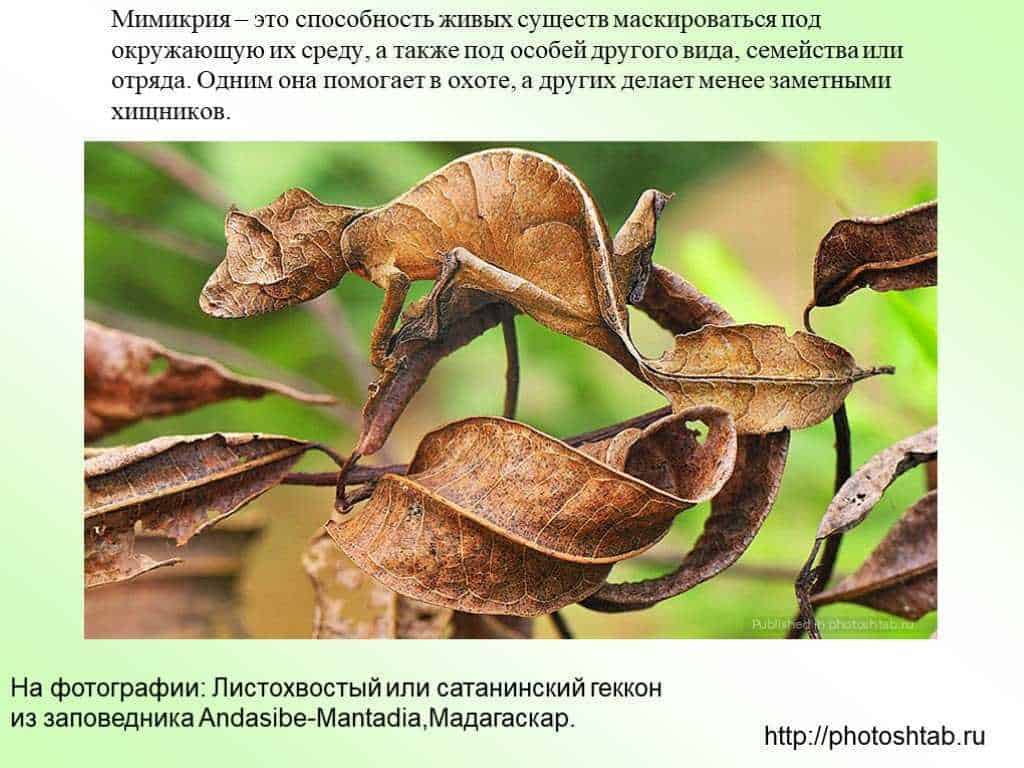
Mimicry is one of the most amazing and evolutionarily significant survival strategies in the animal kingdom. It is the ability of organisms to mimic other organisms or their environment for defense against predators or for successful hunting. Butterflies are one of the most striking representatives of this strategy; their mechanisms of mimicry amaze with their diversity and uniqueness.
One of the most famous examples of mimicry in butterflies is the camouflage of plant leaves. Some species of butterflies have wings with the same shape and color as the leaves of certain plants. When a butterfly lands on a branch or leaf, it immediately blends in with its surroundings and becomes indistinguishable to the eyes of predators.
Another amazing mechanism of mimicry in butterflies is their ability to imitate dangerous or poisonous animals. Some butterfly species have brightly colored wings with various patterns that resemble eyes, snakes or birds of prey. This allows the butterflies to intimidate and defend themselves against predators.
Photographs of butterflies demonstrating their unique mechanisms of mimicry are striking in their beauty and diversity. Nature has created such amazing and adaptive forms that it is sometimes difficult to believe that these are not fiction, but real creatures that live next to us.
Studying the mechanisms of mimicry in butterflies allows us not only to obtain amazing photographs, but also to understand how they have adapted to their environment and how these mechanisms help them survive. Mimicry is one of the most effective methods of defense and deception that evolution has developed in butterflies. Studying these mechanisms helps deepen our understanding of nature and its amazing adaptations.
Mimicry and its role in the survival of butterflies

Mimicry is a unique mechanism that allows butterflies to survive in the harsh natural world. It is a kind of camouflage that allows butterflies to imitate other objects or organisms, thereby evading predators and other dangers.
One of the most famous examples of mimicry in butterflies is leaf mimicry. Some types of butterflies have such a shape and color of their wings that they can easily be confused with an ordinary leaf on a tree. This allows them to sit safely on a branch without attracting the attention of predators.
Another interesting example of mimicry in butterflies is mimicry of dangerous or poisonous organisms. Some types of butterflies have bright colors that imitate poisonous animals or insects. This protects them from predators who may be scared or poisoned if they attempt to attack.
Another interesting type of mimicry in butterflies is mimicry of dangerous or nasty objects. Some species of butterflies have colors and shapes that resemble dangerous or nasty objects, such as bird droppings or rotten fruit. This allows them to deceive predators and save their lives.
Mimicry plays an important role in the survival of butterflies, helping them avoid danger and remain undetected. This unique defense mechanism allows the butterflies to remain alive and continue to reproduce, which is an important factor for the conservation of species and biodiversity in nature.
Protective coloration and crypsis as forms of mimicry

Many butterflies use protective coloration and crypsis as forms of mimicry to protect themselves from predators. Camouflage involves adopting a color or pattern similar to its surroundings, allowing the butterfly to blend into the background and remain undetected. For example, some butterflies have colors very similar to the leaves or bark of the trees they usually live on. This mimicry makes them virtually invisible to predators such as birds or lizards.
Crypsis is another form of mimicry that butterflies use to hide from danger. In this case, the butterfly takes on a color or pattern that makes it practically indistinguishable from surrounding objects or simply invisible to the eyes of predators. For example, butterflies may have spotted colors that make them look like spots on leaves or flowers. This type of mimicry allows the butterfly to hide from enemies and remain unnoticed.
Protective coloration and crypsis are effective mimicry mechanisms that allow butterflies to survive in harsh natural environments. Thanks to these adaptations, butterflies can avoid danger and increase their chances of reproducing. Studying the unique mechanisms of mimicry in butterflies helps us better understand the principles of evolution and adaptation in the animal kingdom.
Aposematic mimicry: bright colors and danger

Aposematic mimicry is a type of mimicry in which butterflies adopt bright and unusual colors to warn predators of their danger. Bright colors and patterns on their wings help the butterflies appear dangerous and repel potential predators.
The danger that butterflies convey through aposematic mimicry can be real or simulated. The real danger may be related to the poisonousness or taste of the butterflies. Some species of butterflies contain toxic substances in their bodies that make them unsuitable for food. Therefore, predators who try such a butterfly remember its bright color and no longer try to eat it.
Simulated danger involves imitating dangerous butterfly species. Some harmless butterfly species can imitate the colors and patterns of dangerous species to intimidate predators. Thus, predators, seeing a butterfly with bright colors, may mistake it for a dangerous species and refuse to attack.
Examples of aposematic mimicry in butterflies:

- Caterpillars and pupae of aposematic butterflies They can also have bright colors and patterns to scare away predators even at the pre-flight stage of development. This helps increase the butterflies' chances of survival at all stages of their life cycle.
- Many tropical butterflies have bizarre and bright colors on the wings, which serve as a warning to predators about their poisonousness or unsuitability as food.
- One of the famous butterflies with aposematic mimicry — Monarch. Its bright orange color warns predators of the presence of toxic substances in its body.
Aposematic mimicry is a unique defense mechanism that allows butterflies to survive in environments where they are exposed to predators. Bright colors and danger conveyed through aposematic mimicry help butterflies to avoid attack and continue to exist in nature.
Mimicry in the form of imitation of other animals

Mimicry is an evolutionary mechanism in which one organism imitates another animal or object to gain an advantage. In nature, there are many examples of mimicry in the form of imitation of other animals. This may be by imitating poisonous or dangerous species to ward off predators, or by imitating harmless species to gain protection from predators.
One of the most famous examples of mimicry in the form of imitating other animals is the mimicry of the honey bee. It has a black and yellow coloration, very similar to the coloration of wasps or hornets, which are predators for many animals. This coloring helps the honey bee to ward off predators and protect itself.
Another example of mimicry in the form of imitation of other animals is the mimicry of surgeon fish. This fish has a bright color and shape, very similar to the color and shape of the blade - a dangerous fish with a sharp fin. This mimicry allows the surgeon fish to hide among the blades and avoid predators.
Mimicry also exists in the form of imitation of other animals in butterflies. Some species of butterflies have colors and patterns on their wings that are very similar to the eyes of birds of prey. This helps the butterflies ward off their predators and survive.
Photos of the unique mechanisms of mimicry in butterflies

Mimicry is a unique defense mechanism that allows butterflies to survive in the harsh natural world. Butterflies have a variety of mimicry techniques that make them appear unattractive or dangerous to predators.
One of the most amazing mechanisms of mimicry in butterflies is bird mimicry. Some butterflies have wings with patterns that are very similar to the wings and plumage of birds. This allows them to camouflage among birds and avoid attacks from predators.
Another unique mechanism of mimicry in butterflies is mimicry of poisonous insects. Some butterfly species have bright colors and patterns that resemble poisonous insects such as bees or wasps. This protects the butterflies from predators, who avoid attacking poisonous creatures.
Butterflies also use the mechanism of mimicry of leaves or plants. Some butterfly species have wings with patterns that closely resemble the texture and color of plant leaves or flowers. This allows them to ideally hide among forest vegetation and become invisible to predators.
Photographs of the unique mechanisms of mimicry in butterflies allow us to admire the diversity of nature and enjoy the beauty of these unique creatures. They demonstrate the sophisticated ways in which nature can ensure the survival of its inhabitants.
Adaptations associated with mimicry in butterflies
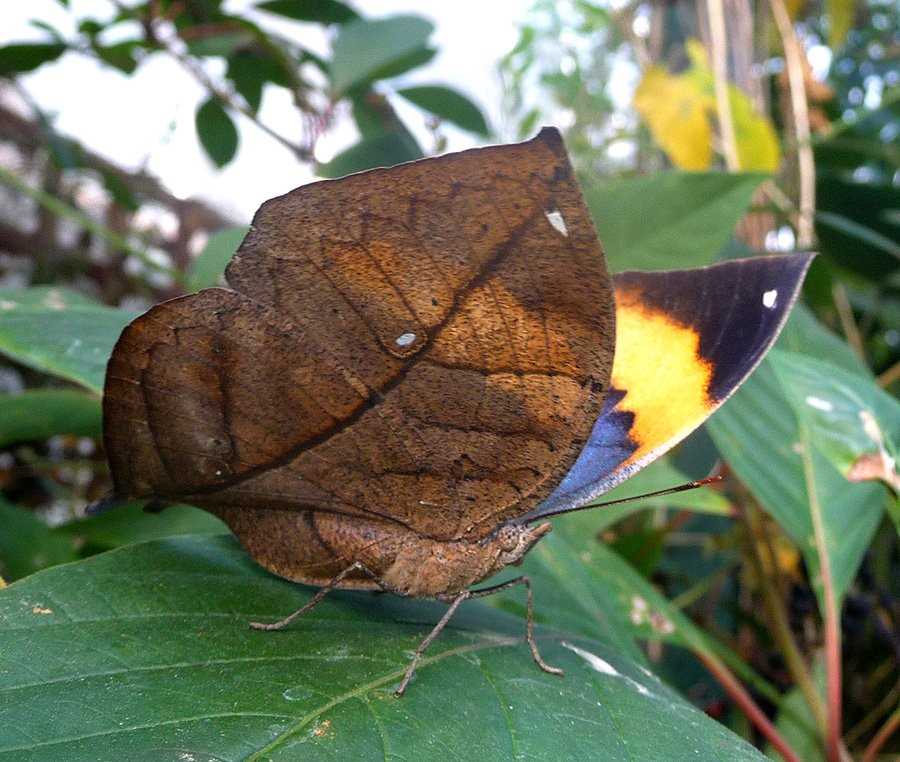
Mimicry is one of the most effective defense mechanisms in butterflies. With this strategy, they can pretend to be other dangerous or unpleasant objects to avoid predators.
One of the most common forms of mimicry in butterflies is the mimicry of poisoned species. Butterflies that take on the appearance of poisoned insects protect themselves from predators who avoid them for fear of poisoning. Such mimicry is especially common among butterflies of the Nymphalidae family, such as ratchet butterflies and caterpillars.
Another form of mimicry in butterflies is environmental mimicry. Some species of butterflies have special wing colors that allow them to blend into the background of their surroundings, such as leaves or tree bark. This allows the butterflies to be undetected by predators and to more easily find food without being noticed.
Mimicry also exists between butterfly species. Some species may take on the appearance of other, more protected species in order to avoid attacks by predators. For example, butterflies of the Swallowtail family can imitate the appearance of butterflies of the Blueberry family, which are known for their bright colors and poisonousness.
Mimicry is an amazing adaptive mechanism that allows butterflies to survive in the harsh natural world. They can pretend to be other dangerous or unpleasant objects, as well as blend in with the environment or other species to avoid predators and find food more easily. This demonstrates the amazing evolutionary adaptability of butterflies and their ability to survive.
Evolutionary features of mimicry mechanisms

Mimicry mechanisms in butterflies are unique adaptations that have evolved to protect against predators and ensure survival. One of the features of these mechanisms is their diversity and adaptability to different habitats and types of predators.
An important factor in the evolution of mimicry mechanisms is the presence of genetic variation in a population. This allows individuals with different color and body shape variations to survive in different environments and adapt to different predators. Thus, the mechanisms of mimicry are constantly being improved and adapted to the changing environment.
Another evolutionary feature of mimicry mechanisms is their spread through the process of natural selection. Individuals with the most effective mimicry mechanisms are more likely to survive and pass on their genes to future generations. Thus, over time, mimicry mechanisms become more and more advanced and effective.
It is also worth noting that the evolution of mimicry mechanisms can occur not only within one species, but also between different species. Some butterfly species can mimic other species to evade predators. This phenomenon is called Müllerian mimicry and is the result of parallel evolution.
In general, the evolutionary features of the mechanisms of mimicry in butterflies indicate the high adaptability and adaptability of these creatures to their habitat. The mechanisms of mimicry are a clear example of how nature finds effective ways to protect and survive in the surrounding world.
The importance of studying and preserving the unique mechanisms of mimicry in butterflies
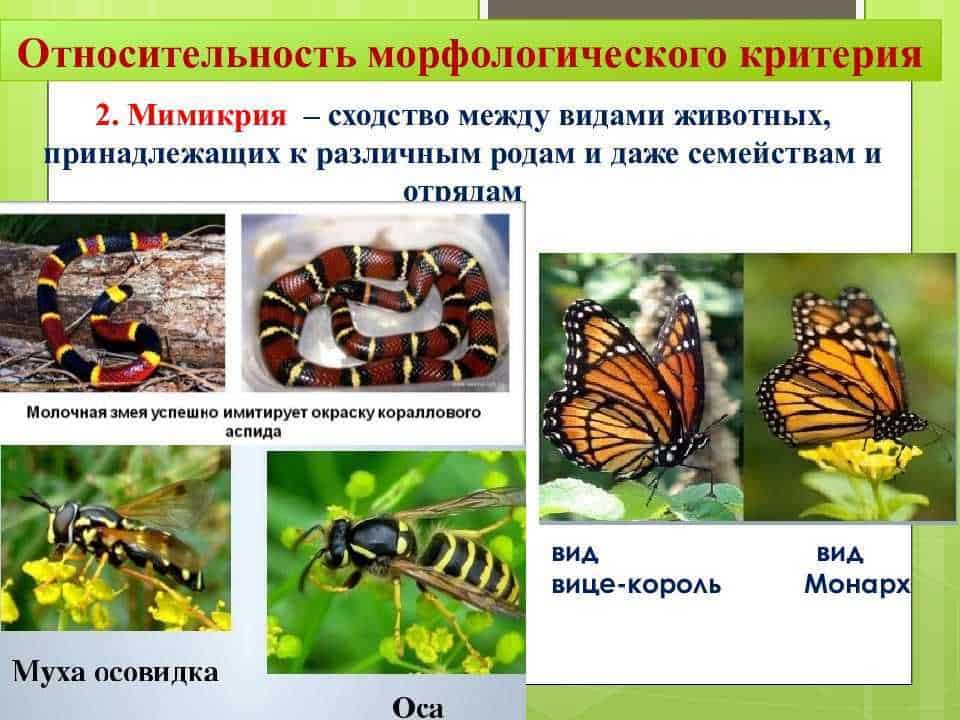
Mimicry is one of the most fascinating and amazing mechanisms present in nature. Particularly interesting is mimicry in butterflies, which are able to perfectly imitate the environment or other organisms. Studying and preserving these unique mechanisms of mimicry is important for understanding evolution, biodiversity, and conservation.
Studying the mechanisms of mimicry in butterflies helps scientists understand how these organisms have adapted to their environment and how they survive in environments where predators are a constant threat. Through mimicry, butterflies can trick their enemies into mistaking them for inanimate objects or dangerous predators. This allows them to avoid attacks and increase their chances of survival.
Preserving the unique mechanisms of mimicry in butterflies is also of great importance for the conservation of biological diversity. Butterflies are important pollinators and ecosystem participants, and their disappearance could disrupt the ecological balance. Therefore, it is necessary to preserve their mimicry adaptations and provide them with conditions for survival and reproduction.
Studying and preserving the unique mechanisms of mimicry in butterflies is also of practical importance. These mechanisms can be used in technology and design to create effective camouflage materials or camouflage methods. In addition, studying mimicry in butterflies could lead to the development of new defense strategies against predators or parasites.

